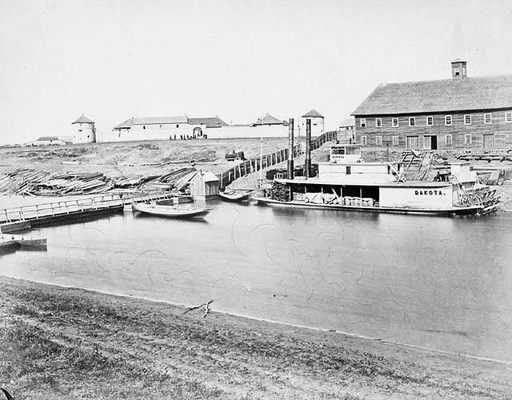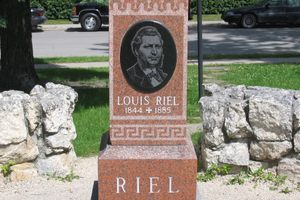About
The London-based Hudson’s Bay Company and the Montreal-based North West Company fought for fur trading supremacy in Western Canada during the early 19th century.
In 1809, the North West Company built its Fort Gibraltar at the confluence of the Red River and Assiniboine River in Manitoba. The trading post was captured and destroyed in 1816, but was rebuilt the following year. In 1821, the North West Company and Hudson’s Bay Company merged, and Fort Gibraltar became Fort Garry a year later.
Fort Garry was a pivotal post for the Hudson’s Bay Company and a major factor in the economy and political culture of the area. A major flood destroyed Fort Garry in 1826, prompting the fort to be rebuilt in 1835 further inland from the river and being dubbed Upper Fort Garry to differentiate from Lower Fort Garry further downriver, which was rebuilt in 1831.
No longer serving economic or military use, Fort Garry was gradually demolished between 1881-88. Today, the only surviving piece of the fort—Governor’s Gate—is the major feature of Upper Fort Garry Heritage Provincial Park.
Open year-round, the park is a modern urban green space. There are a few interpretative plaques that allow visitors to take a trip back in time. The park is modest in size, is without reconstruction or reenactments and it tells the story of Upper Fort Garry is told through a large lighting installation, merging technology and art.
Know Before You Go
Upper Fort Garry Heritage Provincial Park is open 24 hours a day year-round. The park is well-lit, under 24-hour surveillance and is wheelchair-accessible. A free app (iOS and Android) is available for a fully immersive experience. Visitors can also download and print out a park guide if they prefer. The gate to the park is near the corner of Main and Broadway, although the park is open and accessible on all sides.
Community Contributors
Added By
Published
February 22, 2019

















